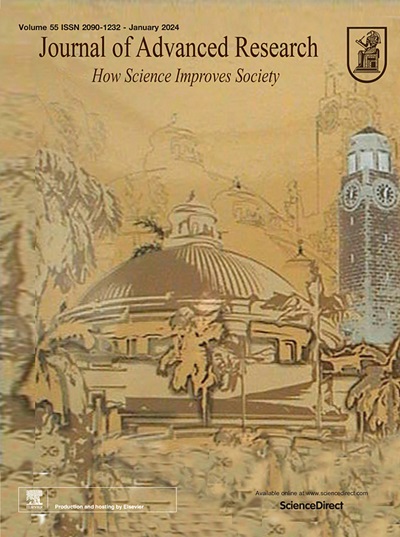线粒体脂肪酸氧化作为阻断治疗耐药和抑制肿瘤复发的靶点:卵巢癌细胞的原理验证模型
IF 13
1区 综合性期刊
Q1 MULTIDISCIPLINARY SCIENCES
引用次数: 0
摘要
接受当前化疗和靶向治疗的癌症患者经常实现部分缓解,最终复发为更具侵袭性,耐药的肿瘤表型。在一定程度上,耐药持久性细胞(drug- tolerance persistent, DTP)是全身抗癌治疗后残存肿瘤和获得性耐药发生的原因。因此,迫切需要针对DTP细胞的新疗法来预防耐药和肿瘤复发。目的探讨耐药卵巢癌持续细胞的特征和关键脆弱性,寻求潜在的治疗策略。方法将卵巢癌亲本细胞暴露于致死剂量的紫杉醇中,构建耐紫杉醇卵巢癌持久细胞。进行了蛋白质组学分析,体外和体内分析,以确定可能成为持久性细胞潜在脆弱性的生物过程。结果发现耐紫杉醇卵巢癌持久细胞通过上调脂肪酸氧化(FAO)进行代谢重编程。FAO抑制剂ST1326抑制了FAO,并增加了持久性细胞对紫杉醇的敏感性。此外,在卵巢癌复发小鼠模型中,紫杉醇与ST1326联合治疗可预防卵巢肿瘤复发,具有满意的生物安全性,表明破坏FAO可提高紫杉醇为基础的卵巢癌治疗的疗效。在机制上,我们发现紫杉醇处理上调了CEBPB,这是一种转录因子,可诱导FAO相关酶HADHA的表达,并导致持久性细胞中FAO的升高。结论本研究揭示了在紫杉醇耐受的卵巢癌持久细胞中FAO的上调,为靶向持久细胞的紫杉醇- st1326联合治疗提供了一种前瞻性的治疗方法,可能阻止获得性耐药的发展,并在未来实现较好的长期卵巢癌控制。我们的研究为推进个性化治疗方法和提高卵巢癌治疗的患者预后建立了一个概念框架。本文章由计算机程序翻译,如有差异,请以英文原文为准。

Mitochondrial fatty acid oxidation as the target for blocking therapy-resistance and inhibiting tumor recurrence: The proof-of-principle model demonstrated for ovarian cancer cells
Introduction
Cancer patients treated with current chemotherapeutic and targeted therapies frequently achieve partial remission, which ultimately relapse with more aggressive, drug-resistant tumor phenotypes. To a certain extent, drug-tolerant persister (DTP) cells are responsible for residual tumors after systemic anticancer therapy and the onset of acquired drug resistance. Therefore, novel therapies targeting DTP cells to prevent drug resistance and tumor recurrence are urgently needed.Objectives
We aimed to investigate the traits and key vulnerabilities of drug-tolerant ovarian cancer persister cells and to seek out potential therapeutic strategies.Methods
We constructed paclitaxel-tolerant ovarian cancer persister cells by exposing ovarian cancer parental cells to a lethal dose of paclitaxel. Proteomics analysis, in vitro and in vivo assays were performed to identify biological processes that could serve as potential vulnerabilities in persister cells.Results
Paclitaxel-tolerant ovarian cancer persister cells were found to undergo a metabolic reprogramming through the upregulation of fatty acid oxidation (FAO). Treatment with the FAO inhibitor ST1326 suppressed FAO and increased sensitivity to paclitaxel in persister cells. Moreover, combination therapy with paclitaxel and ST1326 prevented ovarian tumor recurrence with satisfactory biosafety in a mouse model of ovarian cancer relapse, indicating that FAO disruption can improve the efficacy of paclitaxel-based therapy in ovarian cancer. Mechanistically, we found that paclitaxel treatment upregulated CEBPB, a transcription factor that induced the expression of the FAO-related enzyme HADHA and contributed to FAO elevation in persister cells.Conclusions
This study revealed an upregulation of FAO in paclitaxel-tolerant ovarian cancer persister cells and provided a prospective paclitaxel-ST1326 combination therapy targeting persister cells that may prevent the development of acquired drug resistance and achieve superior long-term ovarian cancer control in the future. Our research established a conceptual framework for advancing personalized treatment approaches and enhancing patient outcomes in ovarian cancer therapy.求助全文
通过发布文献求助,成功后即可免费获取论文全文。
去求助
来源期刊

Journal of Advanced Research
Multidisciplinary-Multidisciplinary
CiteScore
21.60
自引率
0.90%
发文量
280
审稿时长
12 weeks
期刊介绍:
Journal of Advanced Research (J. Adv. Res.) is an applied/natural sciences, peer-reviewed journal that focuses on interdisciplinary research. The journal aims to contribute to applied research and knowledge worldwide through the publication of original and high-quality research articles in the fields of Medicine, Pharmaceutical Sciences, Dentistry, Physical Therapy, Veterinary Medicine, and Basic and Biological Sciences.
The following abstracting and indexing services cover the Journal of Advanced Research: PubMed/Medline, Essential Science Indicators, Web of Science, Scopus, PubMed Central, PubMed, Science Citation Index Expanded, Directory of Open Access Journals (DOAJ), and INSPEC.
 求助内容:
求助内容: 应助结果提醒方式:
应助结果提醒方式:


